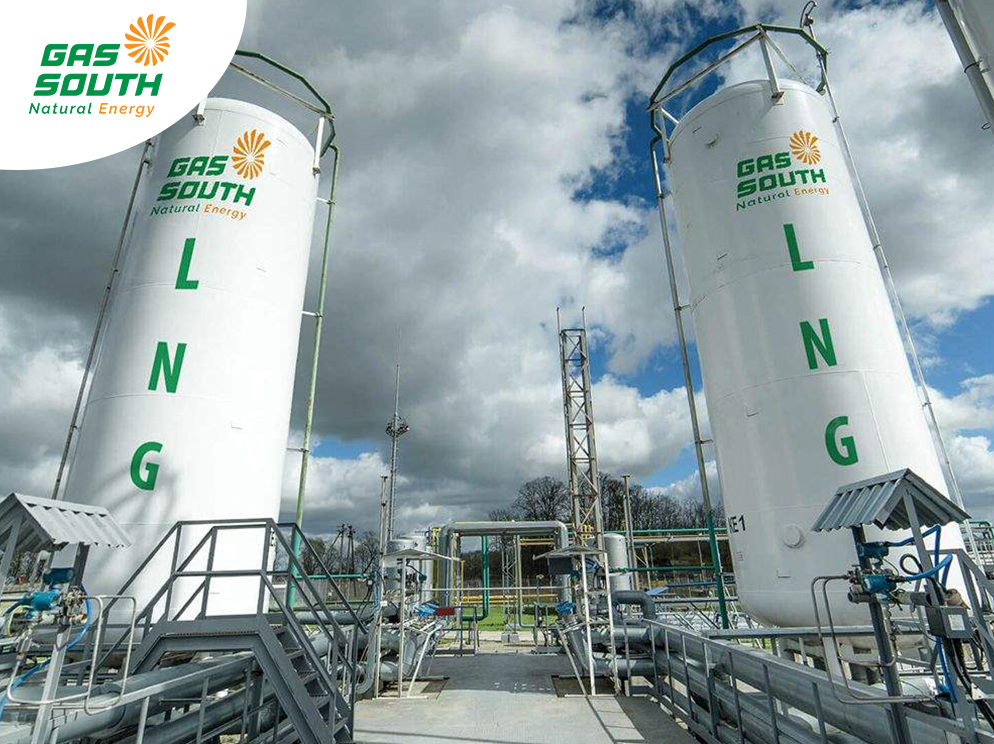Understanding Liquefied Natural Gas (LNG): A Comprehensive Guide
Description: In this blog post, we will explore the fascinating world of Liquefied Natural Gas (LNG). From its definition to its production, transportation, and benefits, we will delve into the details of this increasingly popular energy source. Whether you're a curious reader or a professional in the field, this guide will provide you with a comprehensive understanding of LNG.
See More Application Of Liquefied Natural Gas Collection
Introduction
Liquefied Natural Gas (LNG) is a vital component in the global energy industry, playing a significant role in meeting the growing demand for cleaner and more sustainable fuel sources. In this section, we will define what LNG is and how it is produced.
More About Us: SOUTHERN GAS TRADING JSC
LNG can be defined as natural gas that has been cooled to a temperature of around -162 degrees Celsius (-260 degrees Fahrenheit), at which point it becomes a liquid. This liquefaction process allows natural gas to be transported and stored more efficiently, reducing its volume by approximately 600 times compared to its gaseous state.
Production of LNG
The production of LNG involves several important steps, including exploration, extraction, purification, liquefaction, and storage. Let's explore each of these steps in detail.
Exploration and Extraction
Before LNG can be produced, natural gas reserves must be discovered and extracted. Exploration involves the use of advanced technologies such as seismic surveys to identify potential gas fields deep beneath the Earth's surface. Once a viable reservoir is located, the extraction process begins using drilling rigs to access the gas reserves.
Purification
Once extracted, natural gas often contains impurities such as water, carbon dioxide, and sulfur compounds. These impurities must be removed through a purification process called gas processing. Purification ensures that the natural gas meets the required specifications for transportation and liquefaction.
Liquefaction
After purification, the natural gas undergoes the liquefaction process. This involves cooling the gas to extremely low temperatures using specialized refrigeration units. The cooling process converts natural gas from its gaseous state to a liquid state, resulting in LNG.
Storage and Transportation
Once liquefied, LNG is stored in large cryogenic tanks or specially designed storage facilities to maintain its extremely low temperature. To transport LNG over long distances, it is loaded onto specialized tanker ships. These LNG carriers are designed with double hulls and advanced insulation systems to maintain the low temperatures required for LNG transportation.
Benefits of LNG
LNG offers numerous benefits that have contributed to its increasing popularity as an energy source. In this section, we will discuss some of the key advantages of using LNG.
Environmental Benefits
One of the primary advantages of LNG is its environmental friendliness compared to other fossil fuels. When burned, natural gas produces significantly fewer greenhouse gas emissions, such as carbon dioxide (CO2) and sulfur dioxide (SO2), than coal or oil. This makes LNG an attractive option for reducing air pollution and mitigating climate change.
Energy Efficiency
LNG is highly energy-efficient due to its high energy content. In its liquid state, LNG occupies much less volume than natural gas in its gaseous form, making it easier to transport and store. Its energy density also allows for greater energy generation when used in power plants or industrial applications.
Versatile Applications
LNG has a wide range of applications across various industries. It can be used for electricity generation, heating and cooling purposes in residential and commercial settings, as well as in transportation sectors such as marine and heavy-duty vehicles. The versatility of LNG makes it a flexible energy source that can adapt to different needs.
Security of Supply
With growing concerns about energy security, LNG provides countries with a diversification option for their energy sources. It reduces dependence on specific regions or pipelines by enabling access to global natural gas markets. This diversification helps ensure a stable supply of energy even during disruptions or geopolitical tensions.
Economic Benefits
The production and utilization of LNG also bring significant economic benefits to both producing and consuming countries. The development of LNG projects creates jobs and stimulates economic growth in areas such as construction, engineering, and operations. Additionally, the availability of affordable LNG can help lower energy costs for consumers and businesses.
Challenges and Future Outlook
While LNG offers numerous advantages, there are also challenges that need to be addressed for its sustainable growth. In this section, we will discuss some of these challenges and explore the future outlook for LNG.
Infrastructure Development
One of the key challenges facing the wider adoption of LNG is the need for extensive infrastructure development. This includes the construction of liquefaction plants, storage facilities, and regasification terminals. The investment required for infrastructure development can be substantial, requiring careful planning and coordination among stakeholders.
Safety Considerations
LNG is stored and transported at extremely low temperatures, which requires strict safety protocols to prevent accidents or leaks. Proper training and adherence to safety regulations are crucial to ensure the safe handling and operation of LNG facilities and transportation systems.
Market Volatility
The price of LNG can be subject to market volatility due to factors such as supply-demand dynamics, geopolitical tensions, and global economic conditions. This volatility can impact both producers and consumers, making long-term planning and investment decisions more challenging.
Technological Advances
Advancements in technology continue to play a significant role in the growth of the LNG industry. Research efforts focus on areas such as improving liquefaction processes, enhancing transportation infrastructure, and developing more efficient regasification technologies. These technological advancements aim to reduce costs, increase efficiency, and further improve the environmental performance of LNG.
Conclusion
Liquefied Natural Gas (LNG) is a versatile and environmentally friendly energy source that has gained prominence in recent years. Its production process involves exploration, extraction, purification, liquefaction, storage, and transportation. The numerous benefits of LNG include environmental friendliness, energy efficiency, versatile applications, security of supply, and economic advantages. However, challenges such as infrastructure development, safety considerations, market volatility, and technological advances must be addressed for sustainable growth in the LNG industry. With ongoing advancements and increased global demand for cleaner energy sources, LNG is expected to play an increasingly significant role in meeting our future energy needs.
Remember to consult industry experts or professionals before making any decisions related to your specific circumstances or requirements.
#what_is_the_lng, #pgscomvn, #pgs_com_vn, #whatisthelng, #what_is_the_lng, #pgscomvn, #pgs_com_vn/

This blog about Liquefied Natural Gas (LNG) offers an insightful overview of its production and benefits. Similarly, exploring the Best Boarding Schools in Dehradun provides valuable insights for parents seeking the best educational institutions for their children's academic and personal growth.
Trả lờiXóa